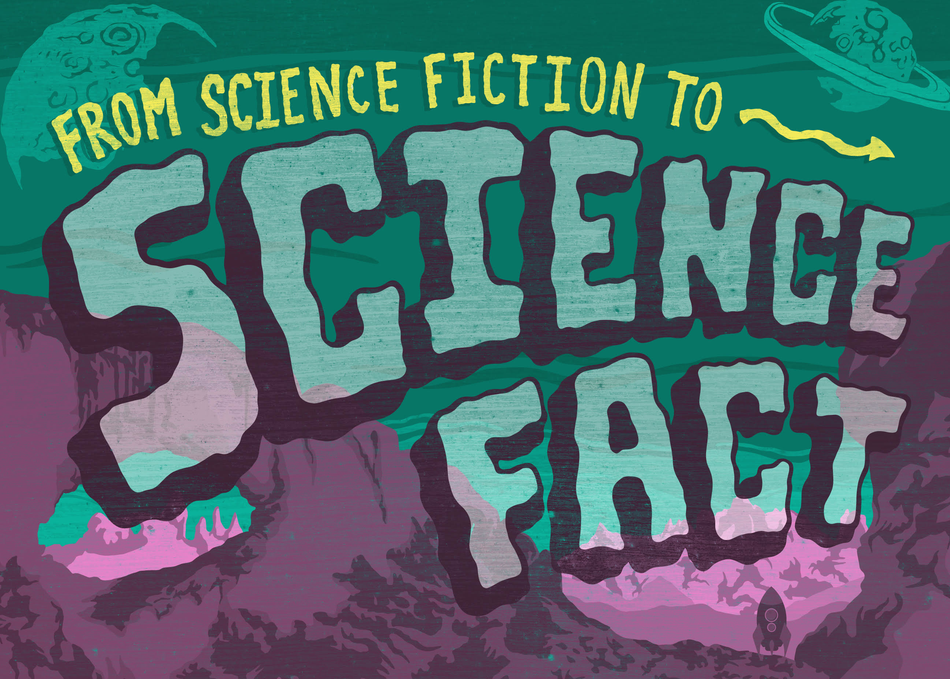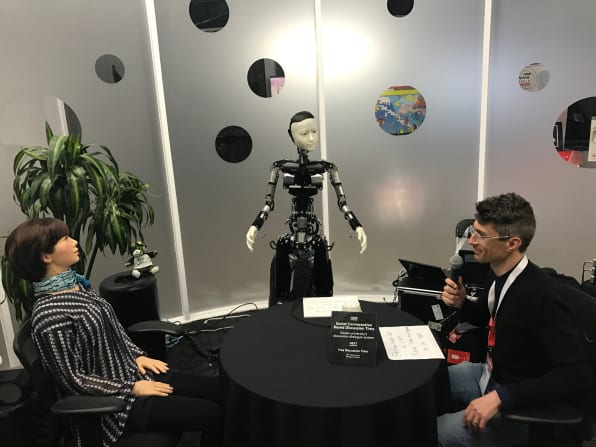It’s that time of year again. The entertainment conference such as South by South West (SXSW) is being held from March 9-18, 2018. The science portion of the conference can be found in the Intelligent Future sessions, from the description,
AI and new technologies embody the realm of possibilities where intelligence empowers and enables technology while sparking legitimate concerns about its uses. Highlighted Intelligent Future sessions include New Mobility and the Future of Our Cities, Mental Work: Moving Beyond Our Carbon Based Minds, Can We Create Consciousness in a Machine?, and more.
Intelligent Future Track sessions are held March 9-15 at the Fairmont.
Last year I focused on the conference sessions on robots, Hiroshi Ishiguro’s work, and artificial intelligence in a March 27, 2017 posting. This year I’m featuring one of the conference’s quantum computing session, from a March 9, 2018 University of Texas at Austin news release (also on EurekAlert),
Imagine a new kind of computer that can quickly solve problems that would stump even the world’s most powerful supercomputers. Quantum computers are fundamentally different. They can store information as not only just ones and zeros, but in all the shades of gray in-between. Several companies and government agencies are investing billions of dollars in the field of quantum information. But what will quantum computers be used for?
South by Southwest 2018 hosts a panel on March 10th [2018] called Quantum Computing: Science Fiction to Science Fact. Experts on quantum computing make up the panel, including Jerry Chow of IBM; Bo Ewald of D-Wave Systems; Andrew Fursman of 1QBit; and Antia Lamas-Linares of the Texas Advanced Computing Center at UT Austin.
Antia Lamas-Linares is a Research Associate in the High Performance Computing group at TACC. Her background is as an experimentalist with quantum computing systems, including work done with them at the Centre for Quantum Technologies in Singapore. She joins podcast host Jorge Salazar to talk about her South by Southwest panel and about some of her latest research on quantum information.
Lamas-Linares co-authored a study (doi: 10.1117/12.2290561) in the Proceedings of the SPIE, The International Society for Optical Engineering, that published in February of 2018. The study, “Secure Quantum Clock Synchronization,” proposed a protocol to verify and secure time synchronization of distant atomic clocks, such as those used for GPS signals in cell phone towers and other places. “It’s important work,” explained Lamas-Linares, “because people are worried about malicious parties messing with the channels of GPS. What James Troupe (Applied Research Laboratories, UT Austin) and I looked at was whether we can use techniques from quantum cryptography and quantum information to make something that is inherently unspoofable.”
Antia Lamas-Linares: The most important thing is that quantum technologies is a really exciting field. And it’s exciting in a fundamental sense. We don’t quite know what we’re going to get out of it. We know a few things, and that’s good enough to drive research. But the things we don’t know are much broader than the things we know, and it’s going to be really interesting. Keep your eyes open for this.
Quantum Computing: Science Fiction to Science Fact, March 10, 2018 | 11:00AM – 12:00PM, Fairmont Manchester EFG, SXSW 2018, Austin, TX.
If you look up the session, you will find,
Quantum Computing: Science Fiction to Science Fact
Speakers
Jerry Chow
IBM
Bo Ewald
D-Wave Systems
Andrew Fursman
1QBit
Antia Lamas-Linares
Texas Advanced Computing Center at University of Texas
Startups and established players have sold 2000 Qubit systems, made freely available cloud access to quantum computer processors, and created large scale open source initiatives, all taking quantum computing from science fiction to science fact. Government labs and others like IBM, Microsoft, Google are developing software for quantum computers. What problems will be solved with this quantum leap in computing power that cannot be solved today with the world’s most powerful supercomputers?
[Programming descriptions are generated by participants and do not necessarily reflect the opinions of SXSW.]
Favorited by (1128)
View all
Primary Entry: Platinum Badge, Interactive Badge
Secondary Entry: Music Badge, Film Badge
Format: Panel
Event Type: Session
Track: Intelligent Future
Level: Intermediate
I wonder what ‘level’ means? I was not able to find an answer (quickly).
It’s was a bit surprising to find someone from D-Wave Systems (a Vancouver-based quantum computing based enterprise) at an entertainment conference. Still, it shouldn’t have been. Two other examples immediately come to mind, the TED (technology, entertainment, and design) conferences have been melding technology, if not science, with creative activities of all kinds for many years (TED 2018: The Age of Amazement, April 10 -14, 2018 in Vancouver [Canada]) and Beakerhead (2018 dates: Sept. 19 – 23) has been melding art, science, and engineering in a festival held in Calgary (Canada) since 2013. One comment about TED, it was held for several years in California (1984, 1990 – 2013) and moved to Vancouver in 2014.
For anyone wanting to browse the 2018 SxSW Intelligent Future sessions online, go here. or wanting to hear Antia Lamas-Linares talk about quantum computing, there’s the interview with Jorge Salazar (mentioned in the news release),

